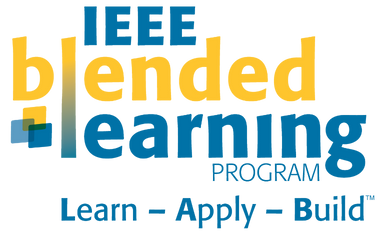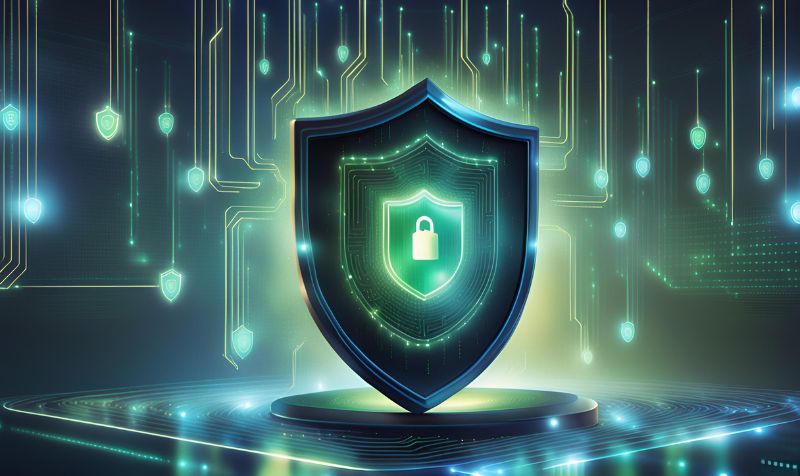
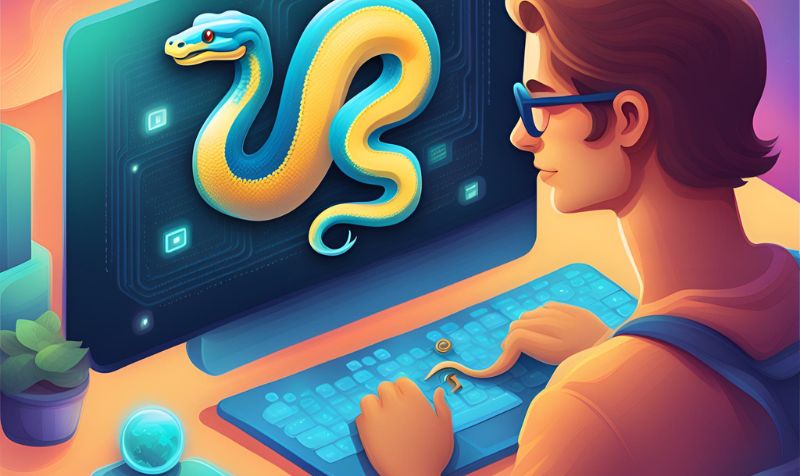
In our 2023 survey of the Top Programming Languages, Python emerged right at the top, triumphing over Java, C++, C, Javascript, C#, and other popular programming languages.
This comes as no surprise since Python is one of the most in-demand languages in the world right now and is used extensively for programming, data analytics, and statistical analysis.
But with so many programming languages and jobs, is it worth it to learn Python? Moreover, can it be learned easily?
This comprehensive guide is your one-stop shop for learning Python in 2024. We’ll break down everything you need to know, from getting started to becoming a confident Python programmer.
Intro to Python
Python is an object-oriented, high-level programming language known for its readability and beginner-friendly syntax. Unlike some languages with complex grammar rules, Python code resembles plain English, making it easier to learn and understand. This, combined with its extensive libraries and frameworks, makes Python a popular choice for a wide range of applications, including:
- Web development
- Data Science
- Machine learning
- Automation
- Scientific computing
How to Learn Python Language?
You can easily learn Python by yourself using the tons of free and paid Python resources available online. These include:
- Websites like IEEE, LearnPython.org, Python.org, and others teach fundamental courses on Python.
- Books on Python that are available in the market. If you want a recommendation, we suggest Hello World! Third Edition: Computer Programming for Kids and Other Beginners, and Fill-in-Blank Problems in Python Programming Learning Assistant System, which includes assignments to help you practice Python concepts.
- IEEE’s Resource Center offers a vast collection of technical articles, conference proceedings, and journals covering Python and various applications.
How Long Does It Take to Learn Python?
The time it takes to learn Python depends on several factors, including your prior programming experience, the amount of time you dedicate to learning, and your aptitude for programming and coding.
Here’s a general breakdown:
- Basics: With consistent practice, grasping the fundamental concepts of Python, such as variables, data types, and control flow, can take anywhere from a few weeks to a few months.
- Intermediate Level: Depending on your experience and familiarity with coding, becoming comfortable with functions, working with files and databases, and object-oriented programming might take several months to a year.
- Advanced Proficiency: Mastering advanced topics like machine learning or web development frameworks can take a year or more and involves ongoing exploration and practice.
Python Developer Salary Insights

When it comes to Python development, salaries can vary widely, typically falling between ₹500,000 to ₹1,200,000 annually. As developers gain experience, their earning potential grows.
For instance, a mid-level Python Developer with several years under their belt typically commands an average salary of around ₹909,818 per annum. Meanwhile, seasoned Senior Python Developers, boasting extensive expertise, can anticipate even more substantial compensation, often reaching around ₹1,150,000 annually.
Website to Learn Python
Although there are several websites, both free and paid, that can help you learn Python, they may not cover the topic in detail.
To get the best results, we recommend exploring an in-depth course on IEEE that can help you gain a thorough understanding of Python concepts, core functions, and how it can be used in the real world.
This helps you go from a beginner to an expert, enabling you to leverage Python in areas like developing web applications, app-based and web gaming, data visualization, CAD applications, and business applications.
Python Courses
You can learn Python using a structured online course. These include:
- Free Online Courses: Numerous websites like LearnPython.org, Python.org, and others offer free introductory Python courses
- Paid Online Courses: If you’re committed to advancing your career in Python, explore comprehensive learning courses available on IEEE.
- Coding Bootcamps: Bootcamps provide intensive Python training programs designed to get you job-ready in a short amount of time (usually weeks or months). These are often more expensive than online courses but provide a highly immersive learning experience with personalized guidance and career support.
For a more extensive learning experience, you can explore the “Python for Everyone” course, which includes a comprehensive curriculum and modules, real-world projects, instructor-led classes, and more. Plus, you get a recognized certification to help you showcase your Python expertise and get a Python developer job.
Best Way to Learn Python

Since there are several approaches to learning Python, the ideal approach depends on your individual learning style, preferences, and goals.
To pinpoint the most suitable Python learning avenue:
- Clarify your objectives: Determine whether you seek a broad introduction or a specialized career-focused program.
- Assess your learning preferences: Reflect on whether you thrive in structured classroom settings or prefer hands-on learning experiences.
- Budget considerations: Explore both free and paid options to gauge what financial commitment aligns with your comfort level.
- Review prerequisites: Confirm that the course aligns with your current knowledge level and doesn’t mandate prior programming experience, particularly if you’re a novice.
Best Apps to Learn Python
Consider enrolling in IEEE’s “Python for Everyone” course, where you explore the world of Python. With the help of this course, you can learn how Python is used in web scraping, gaming, data visualization, CAD, and business.
In addition to online resources, there are tons of apps that you can use to learn and test your knowledge of Python. These include Sololearn, Programming Hero, Programming Hub, Python For Android, and Coding Python, among others.
Best Python Courses for Beginners
For beginners, the best online courses are ones that provide:
- Structured Learning: Online materials and courses tend to be unorganized, meaning you need to spend some time hunting the right resources. Online courses geared for beginners come with video lectures, assignments, and projects to guide your learning journey.
- Hands-on Learning: Platforms with interactive coding challenges and practice exercises can be a great fit since Python concepts are best learned by implementing them.
- Blended Learning: Combining different methods can be highly effective. For example, supplement online courses with hands-on coding practice platforms or use a textbook alongside video tutorials. This approach caters to various learning styles and keeps things interesting.
Learn Python Machine Learning
Python is also popular for being widely used in Machine Learning and data-model training. This is because Python has a powerful combination of user-friendly syntax, extensive libraries like TensorFlow and sci-kit-learn, and versatility.
This allows you to focus on core machine learning concepts while leveraging Python’s pre-built tools for efficient development and deployment of real-world machine learning models.
Why Learn Python?
Here’s why you should consider learning Python in 2024:
1. High Demand
Python is one of the most in-demand programming languages globally. Job postings for Python developers are surging, making it a language with significant career potential.
2. Versatility
Python’s extensive libraries and frameworks empower you to tackle various tasks across different fields. From data science and web development to automation and scientific computing, Python has applications in almost every use case.
3. Open-Source and Free
Python is an open-source language, meaning it’s free to use and modify. This means there is a wealth of free learning resources, tutorials, and online communities to support your learning journey.
4. Future-Proof Skill
Python’s popularity shows no signs of slowing down, as seen in our research. Equipping yourself with Python knowledge can give you a significant edge in the job market and prepare you for future opportunities.
Learn Python for Data Science
Despite being an easy-to-learn and basic programming language, Python is widely preferred in data science and analytics. This is due to its several advantages:
- Extensive Libraries: Python boasts an ecosystem of exceptional data science libraries, such as Pandas for data manipulation, NumPy for numerical computations, and Matplotlib for data visualization.
- Ease of use: Python’s clear and concise syntax makes it a breeze to learn, even for those new to programming. This allows you to focus on core data science concepts like statistical analysis and machine learning algorithms rather than getting bogged down by complex language constructs.
Should I Learn Python or Java?

Both Python and Java are powerful languages, but they excel in different areas. You can choose Python if:
- You need a more beginner-friendly language
- Are interested in data science and machine learning
- Want to explore multiple areas like web development, automation, scripting, and scientific computing
However, Java is ideal if:
- You are targeting expertise in building applications
- Want to focus on the performance side of development
- Are interested in app development, web development, and similar pathways
What to Learn after Python?
After learning Python, you can take on the next programming language or concept, depending on your expertise. Some paths to consider include:
- Data Science and Machine Learning: Python’s extensive libraries, such as pandas, NumPy, Scikit-learn, and TensorFlow, empower you to explore data analysis, machine learning model building, and artificial intelligence applications.
- Web Development: Python frameworks like Django and Flask allow you to build dynamic and interactive web applications panen138.
- Automation: Python excels at automating repetitive tasks, improving efficiency. Explore libraries like Selenium and PyAutoGUI to automate web browsing and desktop interactions.
- Scientific Computing: Leverage Python’s capabilities for numerical computations, data analysis, and visualization in scientific fields.
Python Machine Learning Courses
To focus on the Machine learning algorithms of Python, you can use:
- Online platforms like Coursera, edX, and Kaggle offer numerous Python machine-learning courses and resources.
- “Introducing Data Science: Big data, machine learning, and more, using Python tools” book that teaches you how to use Python libraries specifically for machine learning and data science
Prerequisites to Learn Python
While Python is known for its beginner-friendly nature, there are a few basic prerequisites to keep in mind:
- Logical Thinking: Programming requires the ability to break down problems into logical steps. Familiarity with basic logic concepts will help you grasp programming fundamentals like control flow (if statements, loops) and problem-solving strategies.
- Basic Computer Literacy: Understanding how to navigate computer files, folders, and use a text editor will be helpful when working with Python code.
- Interest in Learning: The most important prerequisite is a genuine curiosity and desire to learn Python. Your enthusiasm will fuel your motivation and help you persevere through challenges.
Python Scope in India
Python’s popularity as a versatile and powerful programming language is surging in India, creating a dynamic job market for skilled Python developers. As per a report, there are 18,000 job openings currently available in India for Python, and jobs in Python have increased by 60% in the last 5 years.
Roadmap to Learn Python
To learn and master Python, we recommend the following roadmap:
1. First Month: Grasping the Fundamentals
During the first month, it’s crucial to focus on the fundamentals of Python, such as variables, data types, operators, control flow (if statements, loops), and functions. These are the basic building blocks that will lay the foundation for your Python journey. Remember, practice is key to mastering these concepts.
2. 2-4 Months Later: Deepen Your Knowledge
Take your learning to the next level, by applying your skills on personal projects that interest you. This not only reinforces your learning but also allows you to build a portfolio showcasing your abilities. You can even consider taking a more structured course during this time like Coursera, IEE, and others, which can help you go beyond the basics.
3. 4+ Months: Specialization
Python’s versatility allows for specialization in various fields. Data science, web development, machine learning, and automation are all popular options. Depending on your chosen path, delve into specific Python libraries like pandas (data analysis), NumPy (scientific computing), Django (web development), or TensorFlow (machine learning). Many online tutorials and courses cater to these specializations.
Wrapping Up
Python’s focus on fundamental blocks makes it extremely versatile and easy to use and learn, making it a popular choice for several user groups. Students can learn Python to understand, write codes, and create valuable solutions to solve problems using object-oriented skills and computational thinking.
Meanwhile, Python is well known for its ability to perform data analysis and risk modeling. This makes it ideal for use in finance, data-driven analysis, and other business areas.
Ready to start learning Python? We’ve got you covered. IEEE offers a comprehensive Python course, “Python for Everyone” designed to equip you with the fundamentals and prepare you for real-world applications. It will help you learn the fundamentals of Python and is ideal for both beginners and mid-stage learners who want to expand their Python programming skills.
FAQ
1. What is a Python used for?
Python is one of the top programming languages, mainly used for web development, data science, machine learning, automation, and scientific computing. Its use for statistical analysis and extensive libraries make it a popular choice for beginners and professionals alike.
3. What are Python basics?
The basics of Python include fundamental concepts like variables, data types, operators, control flow (if statements, loops), and functions. These concepts are crucial for programming and form the building blocks for writing any Python program.
4. What is called Python?
Python is a widely-used high-level programming language known for its simplicity and readability. Guido van Rossum created the Python language in 1991. He named it after a popular BBC television comedy series of the time, ‘Monty Python’s Flying Circus.’
5. What is Python and its types?
Python is a general-purpose and object-oriented programming language. This means that it uses objects and classes that are dynamically typed. These types include numeric types (int, float, complex), string types (str), boolean (bool), and collection types (list, tuple, dictionary, set).
6. Why is Python invented?
Dutch programmer Guido van Rossum created Python in 1991 as a hobby project but soon realized its potential for business use. It was easy to learn and use, making it ideal for beginners as well as business users.
7. How can I teach myself Python?
To learn Python, you can use:
- Online Courses & Tutorials: Many websites offer free and paid Python resources and training, which can be great for learning the basics at your own pace.
- Books: Explore the popular books on the Python language, which can teach you the fundamental concepts and how to write programs. Programming with Python is a great book to kickstart your journey.
- Join Communities: You can join communities and be part of forums that help you solidify your understanding of Python. These can also help with resources and practice assignments to help you master the art.
8. Is it easy to learn Python?
Python is generally considered one of the easiest programming languages to learn, but that doesn’t mean you can learn it in a day or two. Depending on your knowledge of coding concepts and familiarity with programming, you need to spend some time learning the concepts and practicing them.
9. How can I learn the basics of Python?
To learn Python from scratch, we recommend the book “Mastering Python” by Rick van Hattem. It includes all the basic concepts and will help you go from beginner to professional with simple assignments to help you ace the building blocks of Python.
10. How to learn Python in 1 week?
While intensive learning can help you gain a foundational understanding of Python syntax and basic programming concepts in a week, becoming proficient in Python takes considerably longer. A more realistic timeframe for grasping the fundamentals and starting to build simple programs might be a few months with dedicated practice.
Post Tags : How to learn python IoT Python Python programming
Share:
Social Media
Most Popular

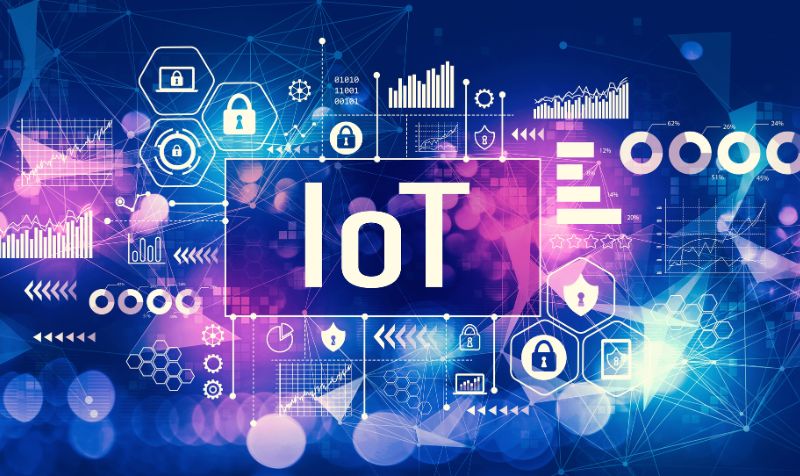
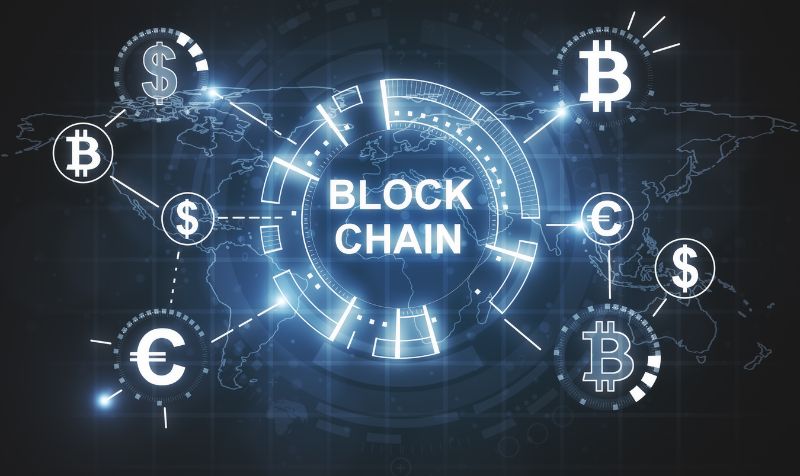
What is Blockchain? A Definitive Guide
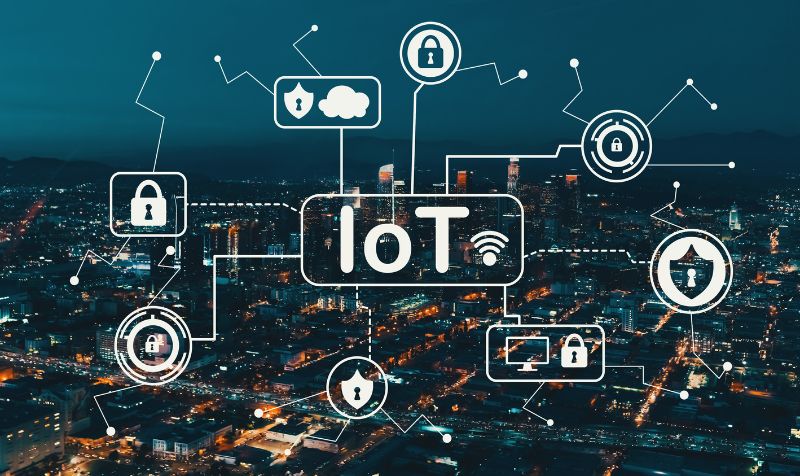
IoT Courses: From Free to Paid All Included
Subscribe To Our Weekly Newsletter
Categories
Filter by tags
-
what is cloud computing
-
Visualization in cloud computing
-
smart contracts
-
sensors
-
Regression in machine learning
-
Python programming
-
Python developer salary
-
Python
-
protocols
-
ML
-
Machine learning MCQ
-
Machine Learning
-
IoT with examples
-
IoT sensors
-
IoT device management
-
IoT
-
Internet of things
-
How to learn python
-
Healthcare
-
Hands-on machine learning
-
Examples of machine learning
-
Ethereum
-
Decentralized
-
cybersecurity
-
cryptocurrency
-
Cloud Computing
-
Cloud
-
Blockchain developer salary
-
Blockchain
-
Bitcoins
-
Bias in machine learning
-
Artificial Intelligence
-
Actuators in IoT
-
actuators
-
5g
Related Posts

Introduction to Cybersecurity
The cyberattack juggernaut increased impossibly in 2024 and left its victims more devastated than ever. Last year, companies were the victims of some nasty attacks.

What is IoT and How to Learn IoT: A Definitive Guide (2024)
Introduction The first question that comes to mind is, “What is the full form of IoT?” IoT stands for the Internet of Things, which refers

What is Blockchain? A Definitive Guide
Blockchain is quickly becoming a buzzword in various industries. This technology was popularised with the advent of Bitcoin in 2008. However, blockchain applications have gone

IoT Courses: From Free to Paid All Included
Introduction In this comprehensive guide on IoT courses, we will explore the field of the Internet of Things and its valuable skills for career advancement,
